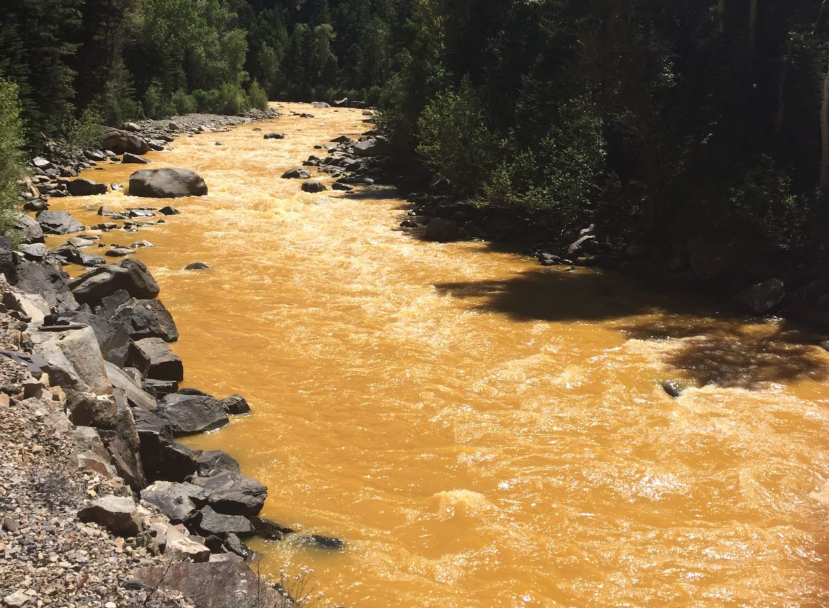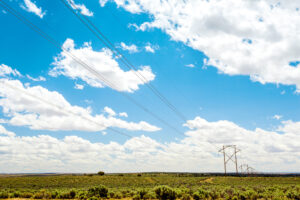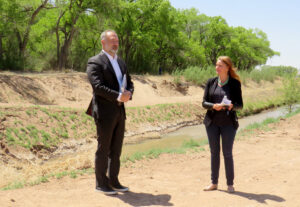Restoration project proposals sought for rivers impacted by Gold King Mine spill

As the sixth anniversary of the Gold King Mine spill approaches, the New Mexico Office of the Natural Resources Trustee is seeking proposals for restoration projects along the impacted river system in the northwest part of the state.
The office hosted a webinar on Wednesday to provide groups interested in submitting restoration projects with details about the process.
The $1 million of funding for these projects comes from a larger settlement that the state of New Mexico reached with Sunnyside Gold Corporation—the owner of mining claims in the Gold King Mine area—in January.
Proposals for projects are due by the end of August. A draft restoration plan will be released for public comment around mid-November and the final plan will likely be released by the end of January, at which time the state will negotiate contracts for restoration projects.
The Gold King Mine spill
On Aug. 5, 2015, crews with the U.S. Environmental Protection Agency triggered a blowout, causing millions of gallons of water laden with heavy metals, including lead and cadmium, to flow down Cement Creek near Silverton, Colorado, into the Animas River.
A couple days later, the resulting mustard yellow plume reached New Mexico, where it deposited sediments as the U.S. Bureau of Reclamation tried to dilute the pollution by increasing the water released from Navajo Lake into the San Juan River, which joins the Animas River in southwest Farmington. The color came from the iron in the plume, but the metals that were not seen continue to cause concern, such as lead and arsenic.
Since then, high levels of lead have been found in some agricultural fields in Cedar Hill—just south of the state line. These fields rely on water from the Animas River for irrigation.
The levels of lead in the sediments prompted the state to add a nearly 20-mile section just south of the state line to its list of impaired waters last year.
The mine spill also led to hesitation among farmers, especially on Navajo Nation. Some of these farmers chose to let their fields go fallow rather than risk contamination from the water.
The spill also led to the Bonita Peak Mining District in Colorado, where the Gold King Mine is located, to be listed as a Superfund site.
Metal-laden water continues to drain from the Gold King Mine and is diverted to an interim water treatment plant at Gladstone, Colorado.
Restoration project requirements
The restoration projects do not have to be directly connected to the mine spill, but they must address something that was determined to have been damaged by the release of toxic metals.
For example, the projects could address the ongoing issue of E. coli in the river water. Prior to the Gold King Mine spill, the San Juan Soil and Water Conservation Division tested samples from the Animas River and found high levels of bacteria related to human waste. Human waste enters the water system through septic tanks and San Juan County has been working to connect homes to sewer systems to protect human health and improve water quality.
San Juan County Manager Mike Stark and Public Works Director Nick Porell were among those who attended the virtual meeting on Wednesday.
In an email, Stark said the county did not have any specific restoration projects in mind while attending and that they learned about the project criteria.
The ONRT’s restoration projects connected to another mine spill near Questa includes expanding sewer main collector lines and individual service lines to 80 households that relied on septic systems. According to the ONRT’s website, the Village of Questa is preparing a request for proposals for engineering design and construction oversight services.
Natural Resources Trustee Maggie Hart Stebbins said in 2020 her office oversaw restoration projects focused on drinking water and wastewater infrastructure, fish and wildlife habitat and water quality improvements.
Hart Stebbins gave the example of Midnight Meadows, a restoration project related to the Questa mine spill. This ongoing project involves riparian wetland exposures that limit the impacts of livestock grazing and vehicles and protect a section of Bitter Creek in Carson National Forest. The project also includes erosion control structures.
In addition to the lawsuit against Sunnyside, the state of New Mexico has joined with other plaintiffs including Utah and Navajo Nation in a lawsuit against the U.S. Environmental Protection Agency. This lawsuit is still ongoing.
This article was originally posted on Restoration project proposals sought for rivers impacted by Gold King Mine spill







